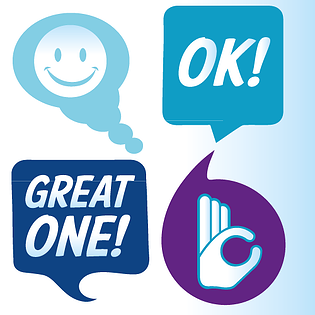Before start creating your course, think for a moment ... what is the purpose of the project? What do you expect from it? Probably you would think ... that my staff understands the best sales strategies, that employees feel identified with the company’s mission and vision, that they learn the correct procedure to create a new product, or that they know the best customer service techniques, etc...
Regardless of that specific skill that you seek to develop in your employees, we all agree that our main goal is that students learn and understand the content being transmitted through the course. Moreover, you aim to develop courses that learners understand, but also that are relevant to what they do. They will be motivated to take your course and complete it as they know it will help them perform better. Therefore, your job is to connect with the learners, help them and make them feel good about their achievements. You can make all this with something as simple as providing appropriate feedback.
 In this post we want to encourage you to achieve learning with understanding by using this secret ingredient: feedback.
In this post we want to encourage you to achieve learning with understanding by using this secret ingredient: feedback.
Feedback should be continuous through the learning experience, not just at the end, when the accumulative evaluation is made. It’s essential to understand and reinforce what the student is thinking and absorbing while they are actively participating in the course.
One of the most effective strategies in eLearning is creating cases or scenarios that resemble student’s reality, where they are supposed to give the best solutions and learn from their successes and mistakes. However, in many cases the feedback we designed as part of this strategy is not enough. Phrases like “Wrong” or “Try again!” do not support the learning process in any form.
Would you like to create good feedback for your students? Then we recommend you to follow these tips:
1. Start by repeating the error
A good practice to start the feedback process is to reaffirm the student’s action. Telling learners they are wrong is a good practice to implement. Usually, controversy gets their attention and motivates them. Challenge students by telling them they are wrong, and you’ll see them motivated to be better and get the right answer. Of course, you need to be careful and use this approach with common sense.
For example, you could use an eye-catching title, like:
"What went wrong? You explained the product’s features and benefits, and yet the client is frustrated. "
It seems obvious, but it will help to highlight the error and at the same time stimulate the student’s interest in why things have turned wrong, which leads to the next level.
2. Explain why
Continue giving feedback by providing the reasoning behind the error. It’s important to easily explain why the wrong answer seemed right. For example:
"Why this is a mistake?
Talking about your product may seem like a good way to inform your client. However, most customers want to hear first about the benefits, and then the characteristics of the products. Begin to emphasize on the product can give customers an impression that you are not paying attention to their needs".
3. If you don’t show the consequences, discuss them
When giving feedback, it works best when you actually show what happens when you make a mistake, for example by presenting an image, video or audio from a frustrated customer. However, if you can’t show it, be sure to explain these consequences clearly. Helping out learners through the process of arriving the right answer can be achieved by giving out hints or reference materials.
Continuing with the same example, you could write something like:
"Possible consequences:
Because you focused only on the product characteristics instead of the clients needs, the customer decides to end the meeting and find another sales agent that meets his requirements."
4. Back to square one
Once the student is aware that he has made a mistake, why it is wrong and what are the possible consequences, its time to go back to square one: to the situation or question that generated the wrong action, and provide the right answer.
For example:
"In cases like this, we recommend:
- Addressing customers differently, maybe do an open question to seek more information from the client.
- Listening to a sales agent with more experience to share how they get customers to express their needs. "
These are some basic tips and things to consider when building effective eLearning courses. While in some cases feedback can be more simple by just giving it without covering these four points, the best practice is taking into account all four of them to ensure that every student receives the necessary guidance and support at all stages of the eLearning course.








